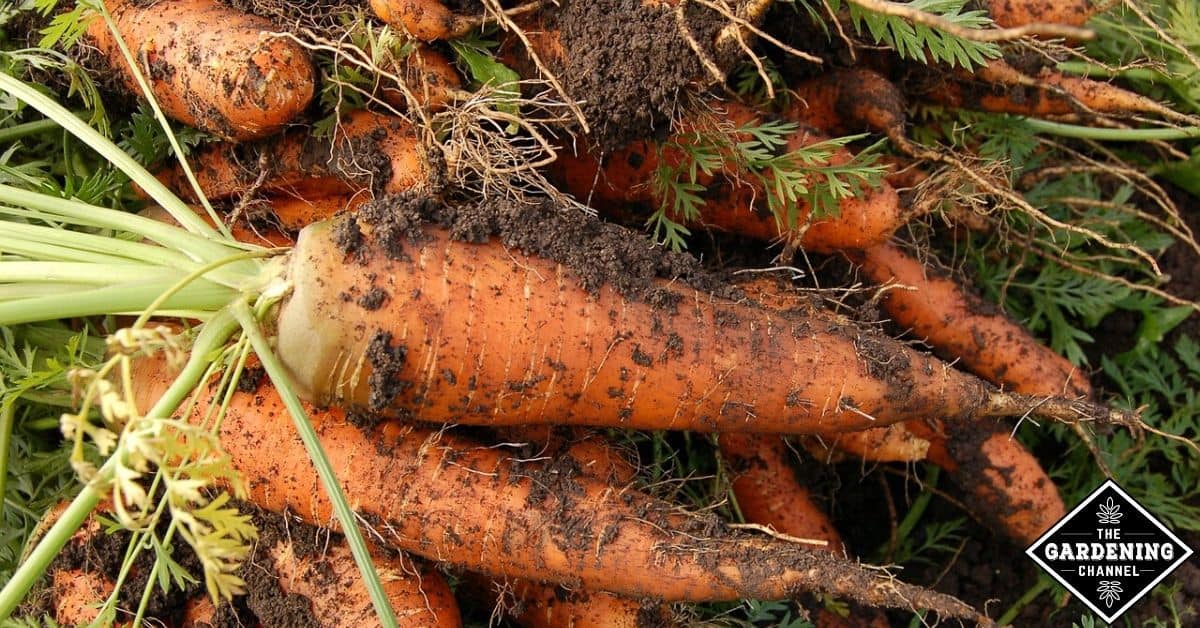You’ve harvested the last of your squash, beans, and tomatoes. And now you are thinking about your more cold hardy crops. You may have heard that you can keep carrots in the ground all winter. If so, here are some tips on how to do it right.
Putting them away in the garden isn’t the only way to do it, but it’s helpful for people who live in cold places and don’t have a lot of cool storage space. Of course, if you followed our carrot growing guide, you should already have a huge harvest!
We link to vendors to help you find relevant products. If you buy from one of our links, we may earn a commission.
After all, the best way to store your carrot harvest is to cover them with sand and keep them between 32 and 40°F with 90 to 95 percent relative humidity.
It might make sense to leave this root vegetable in the ground until you need it if these conditions sound a lot like what’s going on in your garden soil in the winter.
In this article, we’ll get to the root of storing carrots in this way. Here’s what we’ll cover:
As a devoted gardener and carrot lover, I’m always looking for ways to enjoy homegrown carrots fresh from the garden year-round. An appealing option is to simply leave some carrots growing in the garden bed over winter. But will carrots survive the cold? Can leaving carrots in the ground all winter work?
The short answer is yes, you can overwinter carrots in the garden if you take the proper steps. While challenges exist, with the right climate and preparation, fresh carrots can be harvested even during the coldest months from under a cozy blanket of insulating mulch.
In this guide, we’ll look at how overwintering works, techniques to try, and tips for success with carrots left in the ground over winter.
An Overview of Overwintering Carrots
Carrots are biennial plants meaning they take two years to complete their lifecycle. In year one they produce their edible taproot and leafy vegetative growth. Given a chance, they’ll survive winter and flower/seed in year two before dying back.
With adequate protection from freezing, carrots can survive dormant in the soil through winter. Their sugars and nutrients are preserved for regrowth when soil warms in spring. Overwintered carrots will bolt and become inedible once they restart growth. But until then, their roots often remain crisp and sweet, allowing for fresh harvests in winter and early spring.
Leaving carrots in the garden over winter takes less work than digging and storing them. But success depends on your climate and providing sufficient insulation. Even in cold climates, it can be done by using deep mulch cover. Let’s look at the best overwintering techniques.
Mulching Carrots for Winter Protection
Heavy mulching is key for overwintering carrots in place. A thick layer of straw leaves hay, or other organic material keeps soil from freezing and insulates the roots. Here are some mulching guidelines
-
Apply mulch layers up to 2-3 feet deep directly over carrot rows after the ground freezes.
-
Fluff and loosen materials to prevent compacted, matted layers.
-
Leave mulch in place until you’re done harvesting in late winter/early spring.
-
Add extra layers if needed during winter to maintain thickness as materials compress.
-
Ensure mulch edges extend well beyond the width of rows to prevent frost intrusion.
-
Weigh down loose materials like leaves with boards to keep them in place.
Other Tips for Overwintering Carrots
In addition to heavy mulching, here are some other tips to boost your success:
-
Choose late-maturing carrot varieties, which are more cold-hardy.
-
Allow carrot roots to reach full maturity in fall before mulching.
-
Eliminate tops to prevent transpiration moisture loss before mulching.
-
Check that soil moisture is adequate before applying mulch.
-
Use row covers or low tunnels under mulch in marginal climates for extra protection.
-
Interplant quick-growing cover crops like rye or clover between rows to boost soil insulation.
Optimal Climates for Overwintering Carrots
Leaving carrots in the ground over winter is most successful in areas with temperate winter climates. Cooler regions can still overwinter carrots with careful site selection and sufficient mulching. Key factors include:
-
Winter temperatures: The best zones for overwintering have average winter lows above 10°F (-12°C). Colder areas need very thick mulch.
-
First fall frost date: Later first frost allows carrots more growth before dormancy.
-
Last spring frost date: Later spring thaw preserves carrots longer into the next growing season.
-
Snow cover: Consistent snow pack helps insulate and protect carrots.
-
Soil type: Well-drained, sandy soils resist heaving that can push carrots up. Wet soils prone to freezing should be avoided.
Harvesting Overwintered Carrots
Here are some tips for harvesting carrots left in the garden through winter:
-
Brush off mulch and dig as needed once ground thaws in early spring.
-
Expect some loss to rodents or spoilage – harvest generously.
-
Eat early as rising soil temperatures bring decline in quality.
-
Hill soil back over unharvested areas and re-cover with mulch to preserve.
-
Use succession planting dates to stagger harvests of different sowings.
-
Expect diminished sweetness and more fibrous roots later in spring.
Storing Late-Harvested Carrots
If you end up digging more overwintered carrots than can be promptly eaten, they’ll store best under humid conditions in near-freezing temperatures, like a cold cellar or dug root cellar. Some storage guidelines:
-
Maintain 98-100% humidity to prevent shriveling.
-
Ideal storage temperature is 32-40°F (0-4°C).
-
Pack unwashed carrots loosely in sawdust, sand, or moist soil.
-
Avoid plastic bags which can induce rot – use breathable containers.
Problems With Leaving Carrots in the Ground
While overwintering carrots in the garden can work well, potential challenges include:
-
Insufficient mulch resulting in frozen/damaged roots
-
Push-out from soils heaving with freeze/thaw cycles
-
Nutrient leaching and rot from excess rainfall or snowmelt
-
Premature bolting if cold duration is inadequate
-
Animal pests like voles feeding on carrots under mulch
-
Loss of sweetness as soil warms and carbohydrates convert to fiber
When Overwintering Isn’t Practical
In some climates and garden situations, overwintering carrots in the ground may not be feasible:
-
Where winters are very cold with no insulating snow cover
-
In raised beds or containers where roots can freeze
-
With heavy clay soils prone to compaction
-
Where rodents or digging animals are problematic
-
In small gardens lacking space for sufficient mulch insulation
In these cases, it’s best to dig and store carrots for winter use. Cellar storage, refrigeration, and freezing are better options.
Enjoying Perennial Carrots
An alternative way to overwinter carrots is to let some remain in your garden to grow as perennials. Here’s how it works:
-
Allow some carrots to bolt and go to seed in year one.
-
Then let the resulting seedlings grow undisturbed as biennials.
-
They’ll resprout thicker, bushier tops each spring for you to enjoy.
These hardy “perennial” carrots produce abundant early greens and small tender roots. Just be sure to pull them before flowering again or they’ll self-sow prolifically!
Leaving carrots in the ground over winter requires forethought and proper technique for success. But with attention to insulation, soil conditions, and other variables, you can harvest freshly dug carrots even during winter’s coldest months. Nothing beats the sweet crunch of carrots pulled fresh from your garden, no matter the season. Give overwintering a try and see the bounty you can harvest with a little mulch magic!
This Method Is Not for You If…
In some cases, storing this root vegetable in the garden through the winter may not be advisable. I’ll save you some time by going over those cases first.
You may want to harvest your carrots instead of leaving them in the garden if:
- Your soil doesn’t get below 40°F in the winter; it has to be cold enough to stop all plant growth.
- If it rains a lot in the winter or the ground doesn’t drain well, your crop may rot in the ground.
- Many carrot rust flies live in your area. If you leave roots in the ground over winter, they will do very well.
- You planted a type of plant that isn’t meant to be stored over the winter, like a coreless cultivar.
If putting this vegetable away in the ground doesn’t work out, you can pick your carrots and store them in the fridge, a root cellar, or a cool basement. And don’t forget these other things to do in the garden before winter.
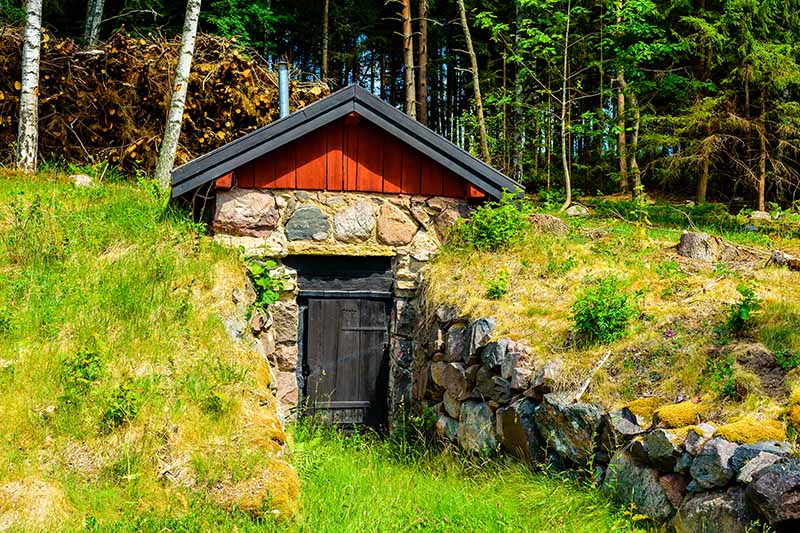
If, on the other hand, you think leaving them where they are is best, there are a few things you should do to store them properly.
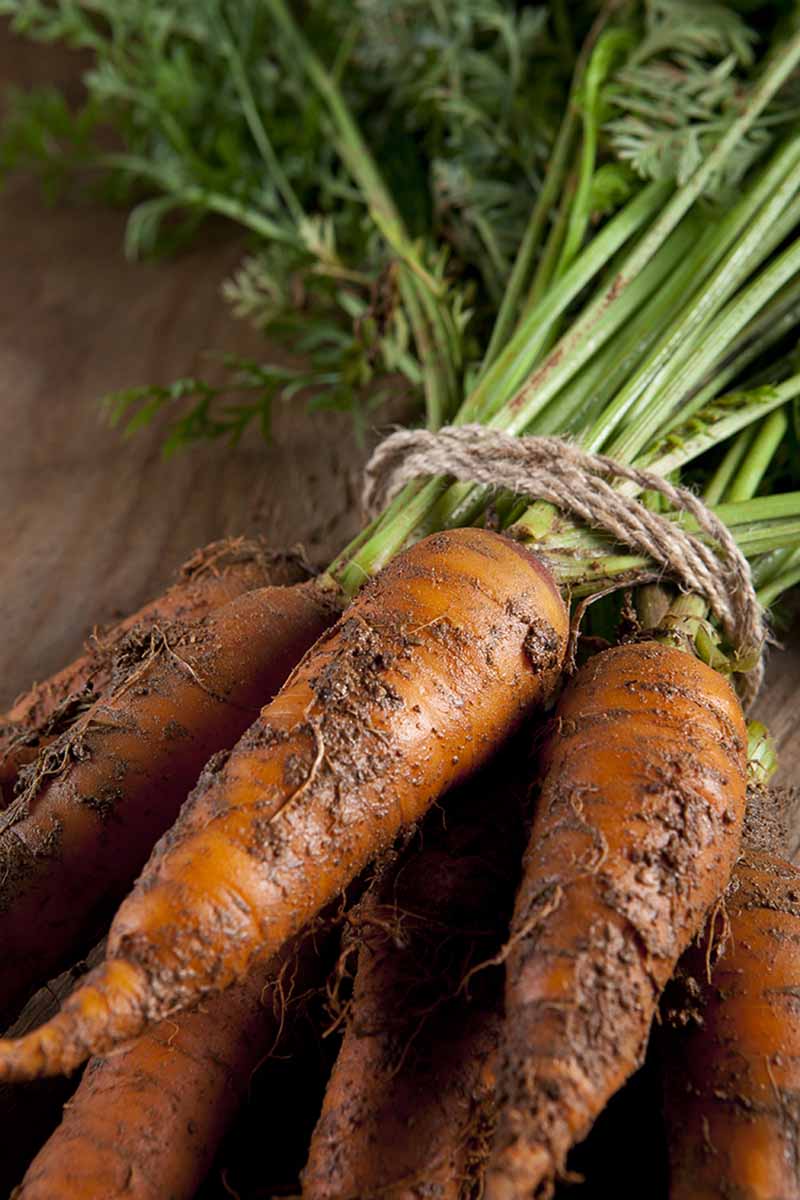
But before you get started, you’ll need to know the best time to store your carrots for winter.
When to Put Your Crop to Bed
After two frosts (which will make your carrots sweeter) but before the ground freezes, it will be time to start getting your crops ready.
How do you know when your ground is frozen?
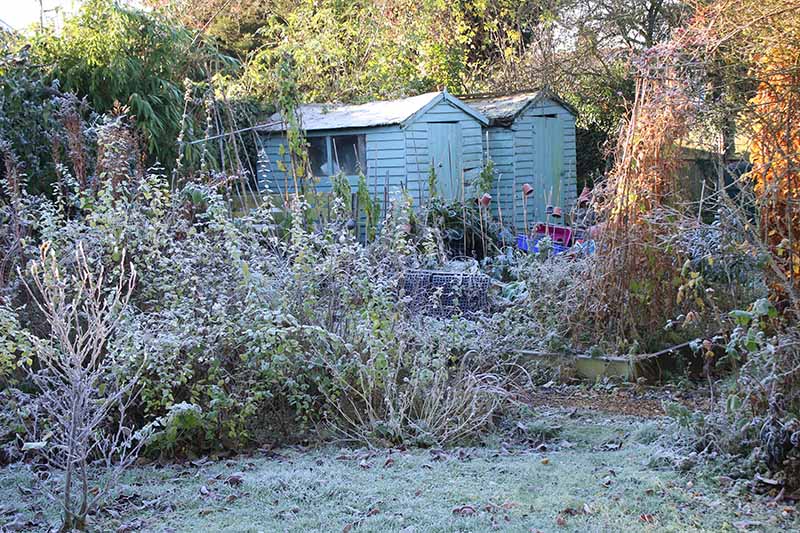
According to the Western Regional Climate Center, when air temperatures reach 24°F or lower, the ground begins to freeze.
How long and how deeply the soil freezes will depend on a lot of things, such as “the duration and severity of the freeze, soil moisture, and soil type.” ”.
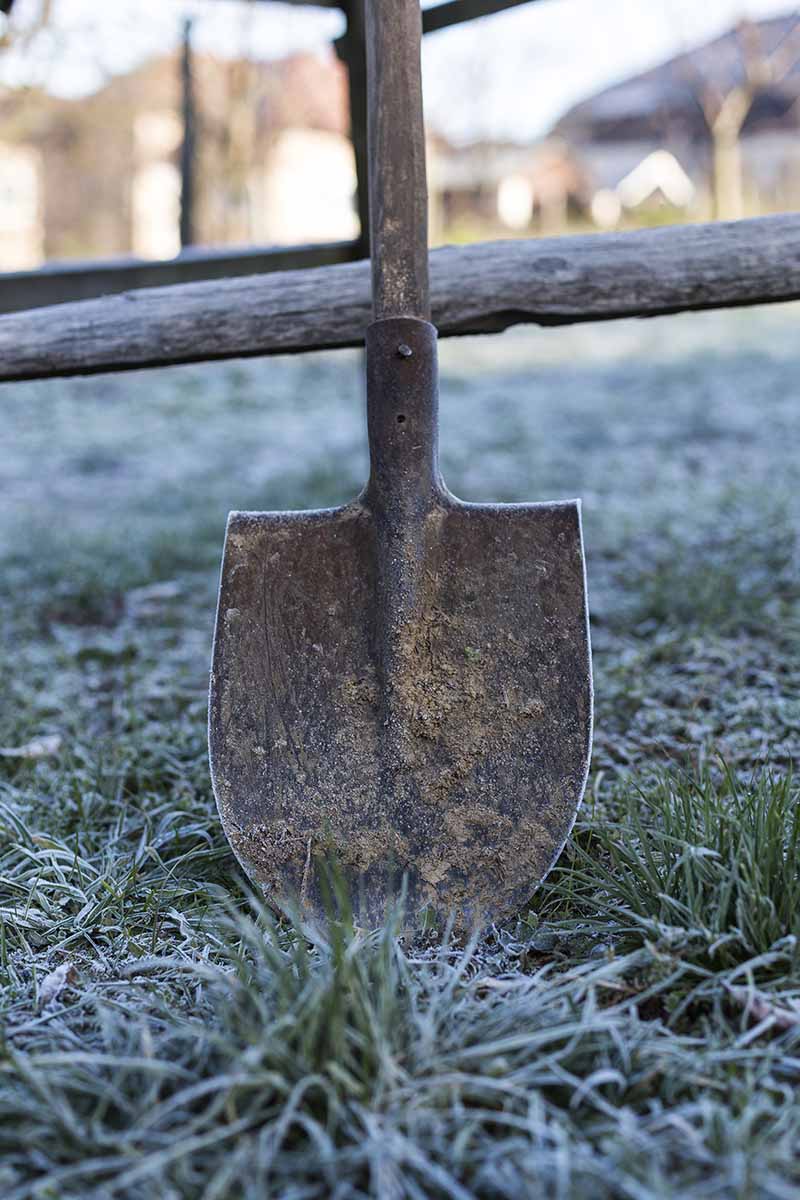
Keep an eye on the weather report and get ready to start getting your carrots ready after a couple of light freezes. Don’t wait for a hard freeze.
Read our article on frost damage to learn more about how different levels of cold will hurt your plants.
Your light frosts have come and gone, and now you’re ready to put your carrots to bed. And for that, they’ll need covering. Before you start to cover them up, though, you need to do something important that will help you find them when it’s time to harvest them.
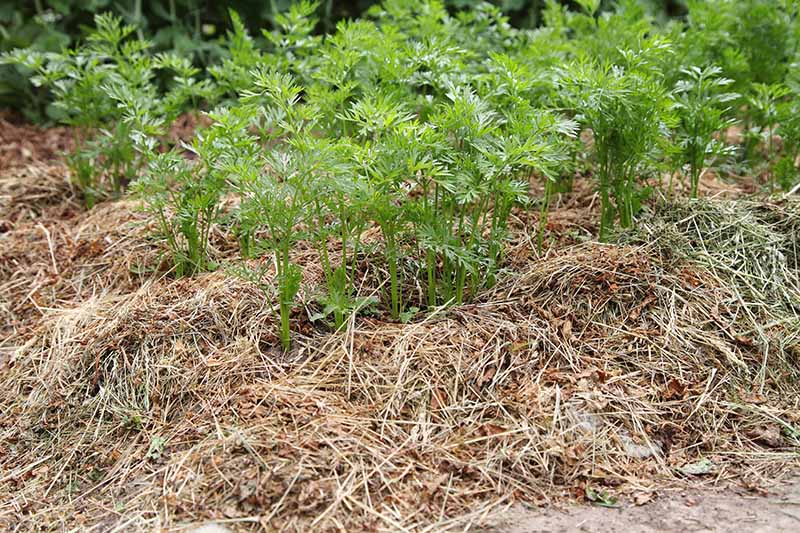
Since you’re going to cover them with mulch, make sure you can find them again first. There are many ways to remind yourself that you have carrots growing in your garden. You could use a sign, a stick, or something else.
In my garden, I use sticks for this purpose.
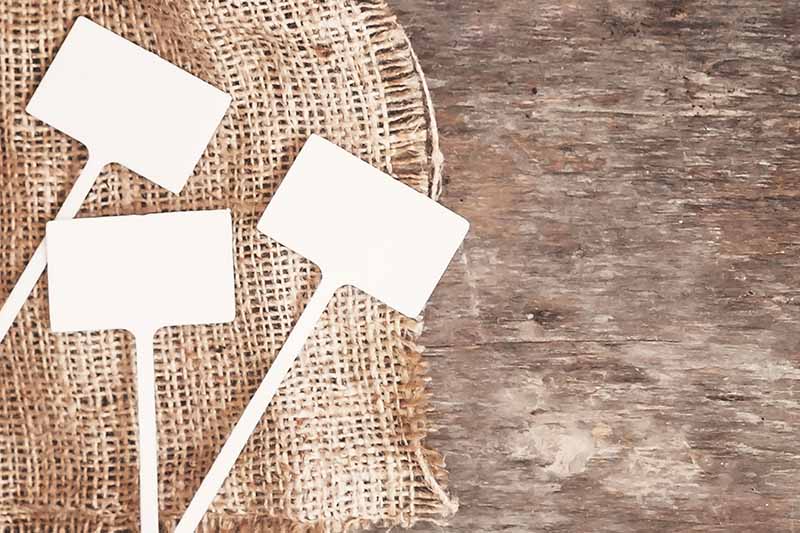
If you live somewhere that gets a lot of snow, make sure your marker is tall enough to go over the expected snowfall. This way, you can dig up some of your carrots before the snow melts.
What Happens When You Leave Carrots In The Ground 30 Extra Days?
How to store carrots for winter?
This ensures that while you are keeping the carrots alive, you do not also keep the weeds alive for next year. The next step for storing carrots for winter in the ground is to heavily mulch the bed where the carrots are growing with straw or leaves. Make sure that the mulch is pushed securely against the tops of the carrots.
Can You overwinter carrots in the ground?
Overwintering carrots in the ground is possible and only requires a few easy steps. The first step to leaving carrots in the ground for later harvest in the winter is to make sure that the garden bed is well weeded. This ensures that while you are keeping the carrots alive, you do not also keep the weeds alive for next year.
When do you leave carrots in the garden?
In fact, in most years I leave my carrots in the garden beds until right before the ground freezes. They’ll turn to mush if you let the ground freeze around them, so make sure you harvest the entire bed before that happens. I’m usually out in my garden in early December digging up the last of the carrots through a light covering of snow.
Should I Harvest carrots in winter?
You may want to harvest your carrots instead of leaving them in the garden if: Your winter soil temperatures do not stay below 40°F – it needs to be cold enough to stop all growth. Your winters are very rainy, or your soil is not well-draining – in these cases your crop may rot in the ground.
- The Ultimate Guide to Growing Strawberries in Raised Beds - August 8, 2025
- No-Dig Garden Beds: The Easiest Way to Grow a Beautiful Garden - August 6, 2025
- How to Protect and Preserve Wood for Raised Garden Beds - August 6, 2025

